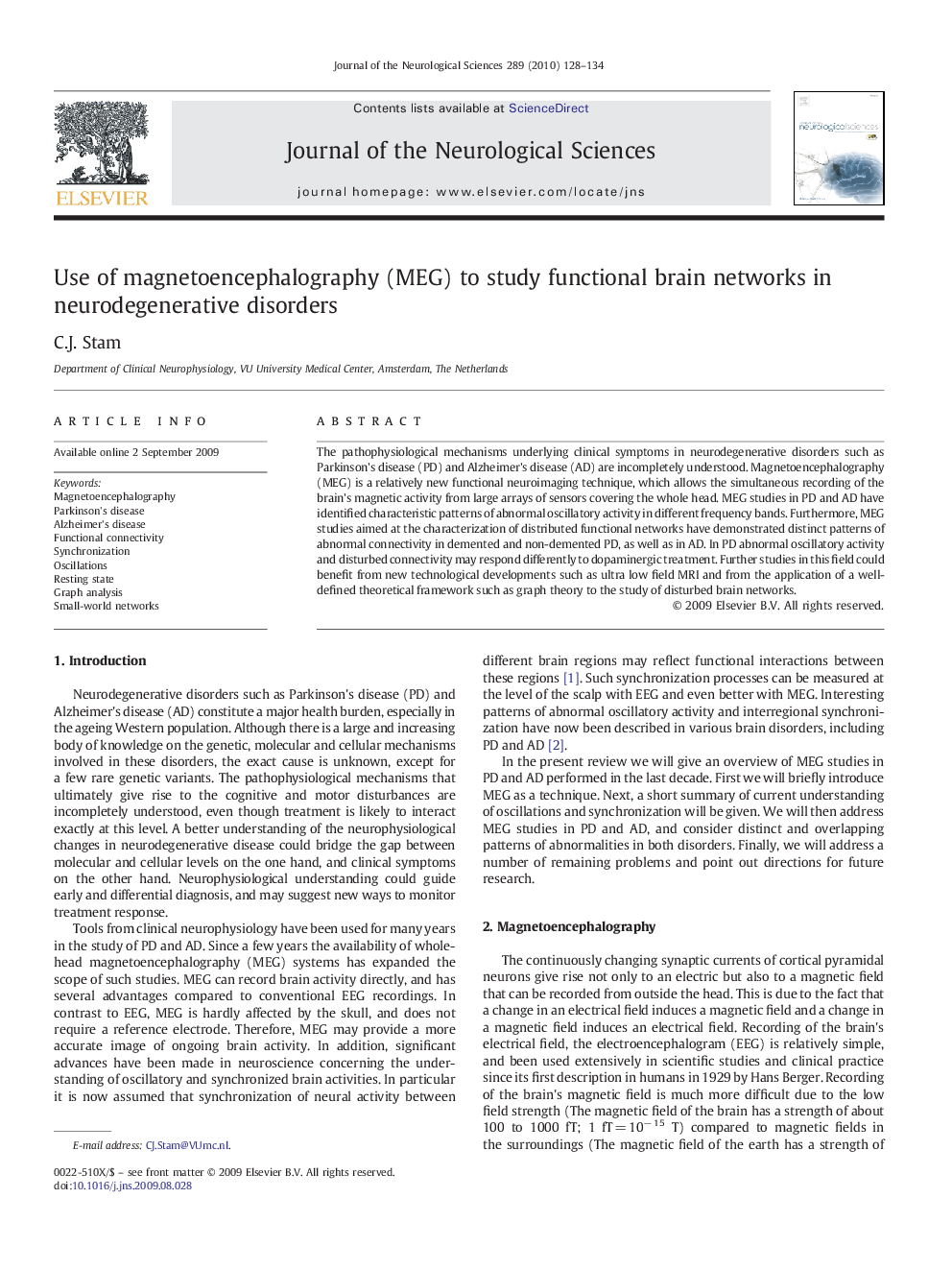| Article ID | Journal | Published Year | Pages | File Type |
|---|---|---|---|---|
| 1914881 | Journal of the Neurological Sciences | 2010 | 7 Pages |
The pathophysiological mechanisms underlying clinical symptoms in neurodegenerative disorders such as Parkinson's disease (PD) and Alzheimer's disease (AD) are incompletely understood. Magnetoencephalography (MEG) is a relatively new functional neuroimaging technique, which allows the simultaneous recording of the brain's magnetic activity from large arrays of sensors covering the whole head. MEG studies in PD and AD have identified characteristic patterns of abnormal oscillatory activity in different frequency bands. Furthermore, MEG studies aimed at the characterization of distributed functional networks have demonstrated distinct patterns of abnormal connectivity in demented and non-demented PD, as well as in AD. In PD abnormal oscillatory activity and disturbed connectivity may respond differently to dopaminergic treatment. Further studies in this field could benefit from new technological developments such as ultra low field MRI and from the application of a well-defined theoretical framework such as graph theory to the study of disturbed brain networks.
